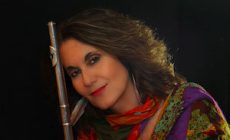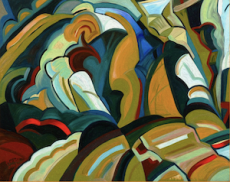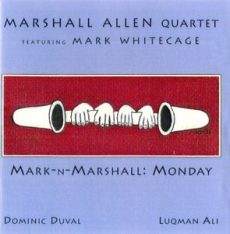
ANDREA BRACHFELD QUARTET
Andrea Brachfeld is an American jazz and Latin jazz flutist. She attended The High School of Music and Art and the Manhattan School of Music. She had her first professional performance at the age of 16. In 1974, she received the Louis Armstrong Award for outstanding Jazz student. She studied with Hubert Laws, Jimmy Heath, George Coleman, and Eddie Daniels. Her breakthrough came when she became flutist for the Latin band Charanga ’76.
Joining her on the bandstand are Mamiko Watanabe, Obasi Akoto & Alvester Garnett.
More Posts: adventure,club,flute,genius,jazz,music,preserving,travel

JOE ADERIES QUINTET
The Joe Anderies Quintet was formed from summer and fall yard concerts during 2020/21. From these sessions Joe pulled together a full on album project featuring the group and original compositions (influenced by Herbie Hancock, Wayne Shorter, Hubert Laws and Lyle Mays). From hard driving swing to Latin and contemporary sounds, the Joe Anderies Quintet will deliver a joyful and revitalizing experience! Don’t miss out on this special night.
Joe Anderies is a longtime Denver flutist, saxophonist and music educator. Over the years Joe has developed cutting edge jazz education programs for elementary through high school students. His vision to connect tradition with the young and upcoming players continues to grow as he enters his 5th year as a board member of the Colorado Conservatory for the Jazz Arts and his 23rd year in the organization as a teacher and advisor. Joe did his formal study at Colorado Mesa Univ, University of North Texas, Metro State Univ, and CU Boulder masters of music program. Joe has recorded and performed with artists such as Larry Coryell, Ron Miles, Chuck Lamb, Bennie Maupin and Rob Mullins.
Gonzalo Teppa – bass, Alex Heffron – guitar, Eric Gunnison – piano, Joe Anderies – alto flute, saxophone.
More Posts: adventure,club,festival,flute,genius,jazz,music,preserving,saxophone,travel

Daily Dose Of Jazz…
Corky Hale was born Merrilyn Hecht on July 3, 1936 in Freeport, Illinois. She learned piano, harp, flute, and cello by the time she was in her teens. She went on to study at the Chicago Music Conservatory and then at Interlochen Center for the Arts in Michigan.
By age 16 she had enrolled in Stephens College, a school for young ladies, for her last year of high school. After graduation she decided to move to Hollywood, California to be a musician but her father had other plans, sending her to nearby University of Wisconsin–Madison. After a year she dropped out, intent on moving to Hollywood but again a compromise with her parents led her to UCLA.
During the 1950s, she became a studio musician in Hollywood, playing harp on albums by Chet Baker, June Christy, Ella Fitzgerald, Anita O’Day, and Frank Sinatra. She worked as a vocalist with Freddy Martin at the Coconut Grove in Los Angeles, California. Jerry Gray invited her to perform with his band in Las Vegas, Nevada where she played piano for Billie Holiday and accompanied her on tour.
As a solo act, she recorded the album Corky Hale Plays George Gershwin and Vernon Duke with Buddy Collette, Howard Roberts, and Chico Hamilton. The late Sixties saw her accompany Tony Bennett on The Tonight Show Starring Johnny Carson and sang a song by herself.
She has worked with Liberace, Barbra Streisand, Elkie Brooks, Harry James, Peggy Lee, James Brown, Spike Jones, George Michael, Roberta Flack, Les McCann, Herbie Mann, Nina Simone and Björk, to name a few. Hale has also produced plays, including Give ‘Em Hell, Harry, starring Jason Alexander and Lullaby of Broadway, a profile of the lyricist Al Dubin. She has appeared at Vibrato, Catalina Bar & Grill, The White House, and the Kennedy Center.
At the University of Wisconsin, Hale was one of the few white students to join the NAACP. She was a birth control teacher at Planned Parenthood in New York and is on the National Advisory Board of NARAL and on the board of WRRAP. She is an American Film Institute associate and is the founder of Angel Harvest, an organization which redistributes unused food from restaurants, hotels, and events to hungry and needy people in Los Angeles.
Harpist, pianist, flutist, and vocalist Corky Hale, who recorded four albums as a leader and has been a theater producer, political activist, restaurateur, and is the owner of the Corky Hale Women’s Clothing Store in Los Angeles.
More Posts: bandleader,flute,harp,history,instrumental,jazz,music,piano,vocal

Daily Dose Of Jazz…
Joseph Samuel Thomas was born on May 31, 1933 in Newark, New Jersey. As a child, he learned to play alto and soprano saxophone, trombone, flute and piano, and also taught himself how to write music. Encouraged by his older brother, he began performing in clubs from the age of fifteen and was ultimately noticed by James Moody.
After enlisting in the United States Army he received a Purple Heart during combat in the Korean War. Returning to the States, Joe performed with Specks Williams and joined Rhoda Scott’s Trio in the early 1960s.
Thomas recorded with organist Jimmy McGriff and released a dozen albums under his own name in the late 1970s and early 1980s. As a sideman he also recorded five albums with Scott, and one each with Ambersunshower, Beck, Buddy Terry and Joe Tex.
Flutist, tenor saxophonist and bandleader Joe Thomas passed away in Orange, New Jersey at the age of 84 on July 26, 2017.
More Posts: flute,history,instrumental,jazz,music,piano,saxophone,trombone

Daily Dose Of Jazz…
Marshall Belford Allen was born in Louisville, Kentucky on May 25, 1924. During World War II he enlisted in the 92nd Infantry Division and was stationed in France. He studied alto saxophone in Paris, France and played in Europe with Art Simmons and James Moody.
Best known for his mastery of explosive, jarring, chaotic sound effects on the alto saxophone, the opportunity came to create a long association with Sun Ra, with whom he performed almost exclusively from 1958 to Ra’s death in 1993. Marshall recorded with Paul Bley in 1964 and Olatunji during the mid-1960s.
Since Sun Ra death Allen has led the Arkestra and has recorded two albums. Allen often appeared in New York-area collaborations with bassist Henry Grimes, and participated in the Innerzone Orchestra with Francisco Mora Catlett, Carl Craig and others in an appreciation of Sun Ra’s music.
In 2022, the building at 5626 Morton Street known as the Arkestral Institute of Sun Ra was listed as a historic landmark in the Philadelphia Register of Historic Places. Free and avant-garde jazz alto saxophonist Marshall Allen, who also plays flute, oboe, piccolo, and EWI, at the age of 99 continues to live at the Institute, which has been his home since 1968.
More Posts: bandleader,ewi,flute,history,instrumental,jazz,music,oboe,piccolo,saxophone


